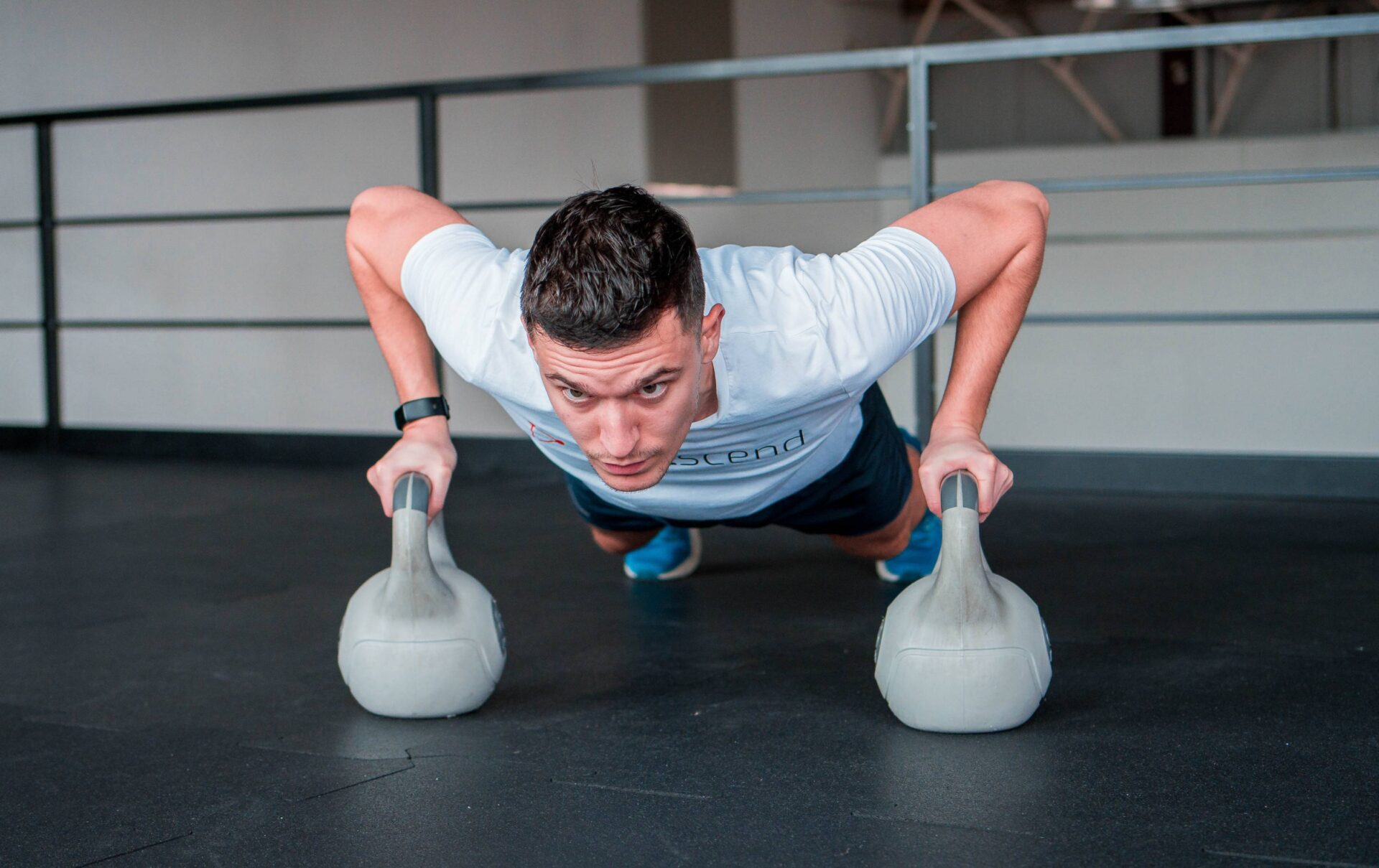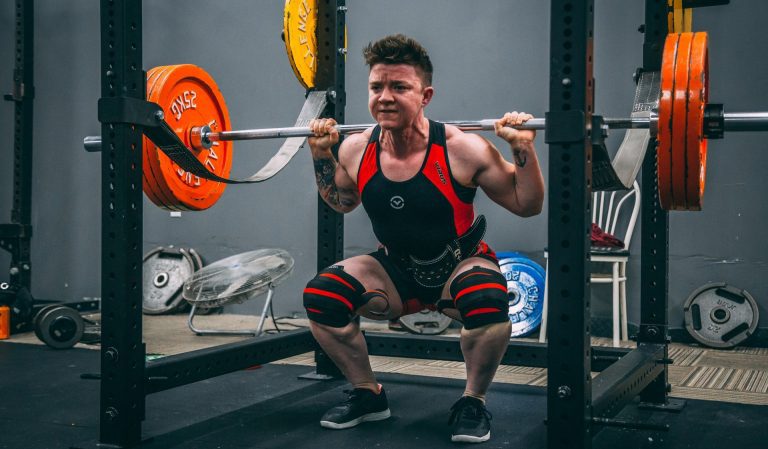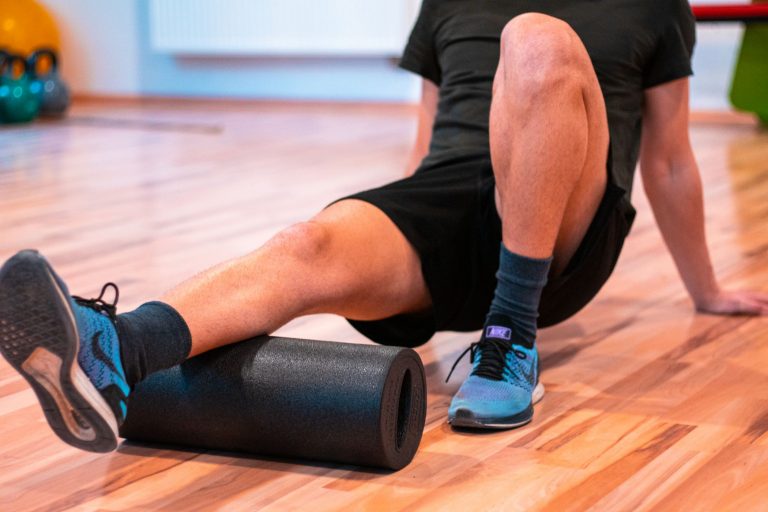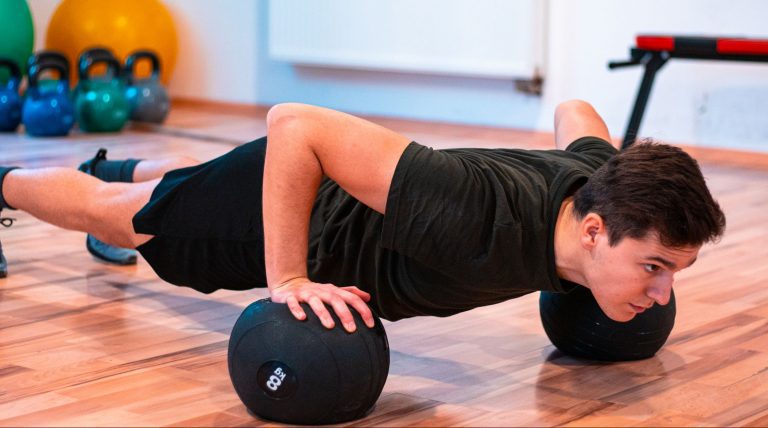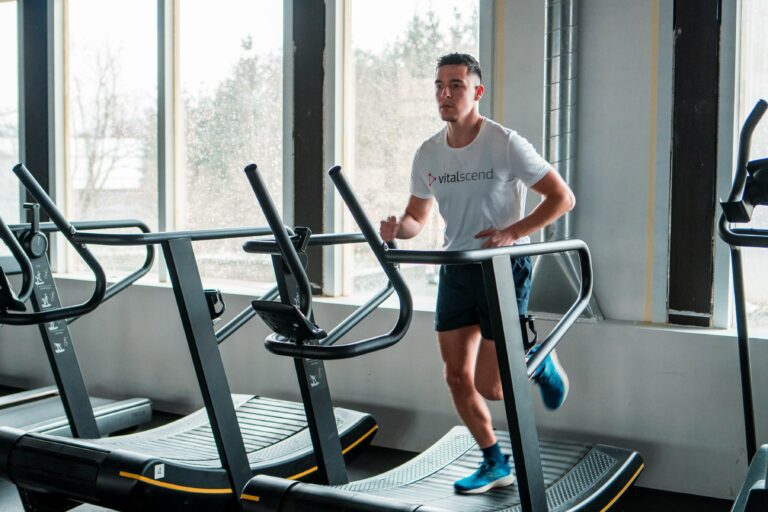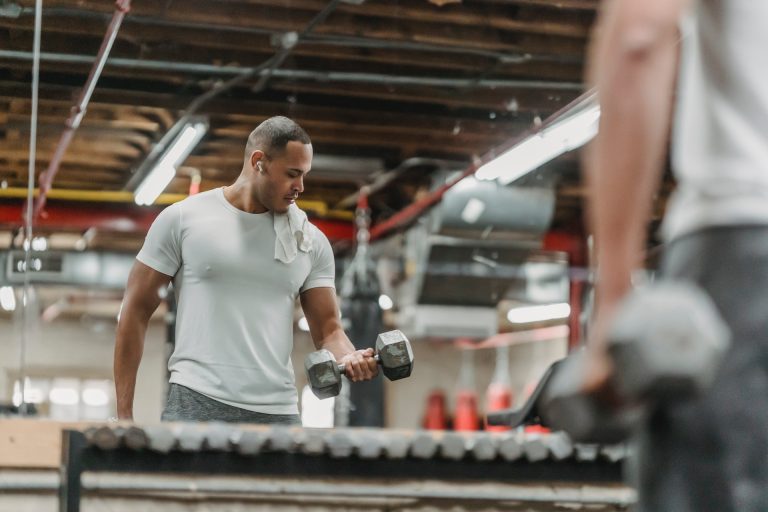Hybrid Training: Combine Cardio and Strength For Optimal Health
Exercise is one of the key factors contributing to health, we know this. But strength training only doesn’t quite work your heart. Just as running won’t make you stronger.
To be fully healthy, we need both. One trains the cardiovascular system, and the other trains our muscles and nervous system. Hybrid training seems to be the intersection, a great strategy to get the best of both worlds.
Hybrid Training – What is
Hybrid training seems to be gaining popularity in the ever-growing landscape of fitness. The goal is to blend both strength and cardio training, so we get the most effective outcome.
When referring to hybrid training, we either mean
- Functional training → full body movements that incorporate both strength and cardio, such as doing functional kettlebell exercises
- Combined Training → incorporating both strength and cardio in a single workout, such as lifting weights and hitting the rower as an intense 15-minute finisher.
- Separate Training → a dedicated workout for each, strength and endurance. This splits training into two sections. We don’t combine both in one single workout, but on some days we train strength, on other cardio.
In most cases, the first two approaches would be a great starter for fitness amateurs and health enthusiasts. These give a greater return on investment, in terms of time.
Fitness Enthusiast vs. Hybrid Athlete
So, for someone who visits the gym 2-3 times weekly, and has no other aerobic activities but also wants to increase strength to some degree, it makes sense to train functionally. It makes sense to combine strength and cardio training in a single session.
This can be achieved by doing more dynamic movements like landmine press, pushing sled, medicine ball throws, jumping lunges, or kettlebell swings. Another strategy is having a dedicated 45-minute window for a strength session, adding 15 minutes of intense cardio as a finisher.
In hybrid athletes, mostly those who want to take their performance to another level, and potentially compete in the future → separation of training leaves place for a dedicated workout for strength, or endurance. This comes into play once one trains 4+ times weekly.
Conclusion
Hybrid training is the intersection of strength and endurance. It combines both strength work and aerobic endurance, providing a wide variety of health benefits for the individual.
Impact on Health → Why You Need Both Cardio and Strength
When it comes to optimizing health and performance, balance is key. Incorporating a combination of strength and cardio greatly contributes to overall health, and ensures a well-rounded approach to fitness.
The benefits of strength training are more geared toward:
- improving body composition
- increasing lean muscle mass
- reduction in fat stores
- enhancing metabolic health
- increasing bone density
- increasing strength / CNS activation
- preventing injuries, pain, and limitations
- improving posture and confidence
On the other hand, endurance-based training assists with:
- improved cardiovascular function
- lower blood pressure / better cholesterol profile
- losing fat and burning calories
- enhancing energy production
- optimizing mitochondria function
- reducing the risk of chronic diseases
- improvement in mood and overall well-being
Overall, the combination of strength and cardio training optimizes physical performance, reduces the risk of developing disease, and improves one’s health and well-being in many aspects.

Predictors of Longevity
Training helps you adapt to movement, so you can move more and move better. For example, squats will help you lift more the next time, which enhances your ability to push from the ground. This helps you run from a lion (rarely these days) or hike up a mountain. Put simply, movement makes you mobile.
Fragility and immobility are characteristic of the older population, and linked to numerous chronic diseases. Our ability to move falls with age. But as we’ve seen, those who train regularly maintain mobility for longer.
One who’s adapted to running 10 miles, although with age it’ll decline, they’ll still be able to walk for hours with no problem, even at older ages. One who’s been squatting, carrying, and lifting things has a higher bone density, better balance, and higher muscle mass later, preventing the risk of injuries and falls.
Some of the Predictors of longevity include
- VO2 max → the maximum amount of oxygen your body can utilize during intense exercise. It’s a measure of cardiovascular fitness and endurance. Higher VO2 max typically indicates better cardiovascular health and aerobic fitness.
- Grip Strength → a measure of the strength of your hand and forearm muscles. It’s often used as an indicator of overall muscle strength and can also correlate with mortality risk.
- Body Composition → the proportion of fat, muscle, bone, and other tissues in your body. It’s typically measured using methods like body fat percentage, BMI (Body Mass Index), or waist-to-hip ratio. Healthy body composition is often characterized by a lower percentage of body fat and a higher percentage of lean muscle mass.
- Heart Rate Variability → HRV measures the variation in time intervals between heartbeats. It’s a marker of the autonomic nervous system’s ability to adapt to changing demands and stressors. Higher HRV is generally associated with better cardiovascular health, stress resilience, and overall fitness.
- Balance → the ability to maintain stability and control of your body’s position. It’s essential for performing everyday activities and reducing the risk of falls and injuries, especially as we age.
Hybrid training, emphasizing both strength and cardio can positively impact all these factors. Aerobic (LISS) and anaerobic exercise (HIIT) enhance VO2max levels, metabolic health, and HRV. Strength training improves body composition, increases lean muscle mass, increases grip strength, and improves balance. All in all, training hybrid is important from the standpoint of health and fitness.
Strength Training
Strength training lays a robust foundation for stability, functionality, and strength. Determining the appropriate volumes, types of exercise, and intensity level will depend on the individual goals. But here are some general facts we need to know before jumping into the area of strength
The term strength training is an umbrella term, linking any movements that help us build muscle and strength. Various types of strength training can include bodyweight exercises, resistance-band training, calisthenics, or weightlifting
Weightlifting is the most modifiable, practical, and structured type of training. It gives the best ROI, and it is the most controlled. It can be done on machines, with free weights, kettlebells, barbells, etc.
Compound exercises should build the base of one’s strength training routine. These are multi-joint movements like squats, deadlifts, and overhead presses that are best to train multiple aspects like stability, mobility, and strength.
Then there’s intensity and volume.
Training for muscle mass [hypertrophy] emphasizes volume. The goal is increase in size, which is achieved by lifting medium load [65-85% RM] for a greater volume [10-15 reps, 3-4 sets] with shorter breaks [60-90 seconds]. This fatigues the muscles and causes micro-injuries which are regenerated with a proper recovery.
Strength training emphasizes lifting greater loads. This is done after GPP and hypertrophy training. The goal is activating more muscle mass at once, which depends on neural activation [adaptations]. It’s characterized by lifting greater loads [90%+ RM], having lower volume [3-5 reps, 3 sets] and longer breaks [4-5 mins].
General physical preparation and training for muscle mass is a pre-requisite to training for strength. One must first cause the anatomical adaptations, gain stability, and learn the correct technique with lighter loads before transitioning to heavier ones.
The exercises chosen will depend upon the number of gym visits. For amateurs, starting with full body – 2x weekly is advisable until further progressions require more complex training splits.
Generally, at 2-3 gym visits per gym, it’s optimal to prioritize movements like
- posterior chain – deadlifts, single-leg deadlifts, lat pull-down, or single-arm row
- anterior chain – squats, lunges, bench press, and overhead press
- core and stability – farmers carry, anti-rotation, planks, etc.
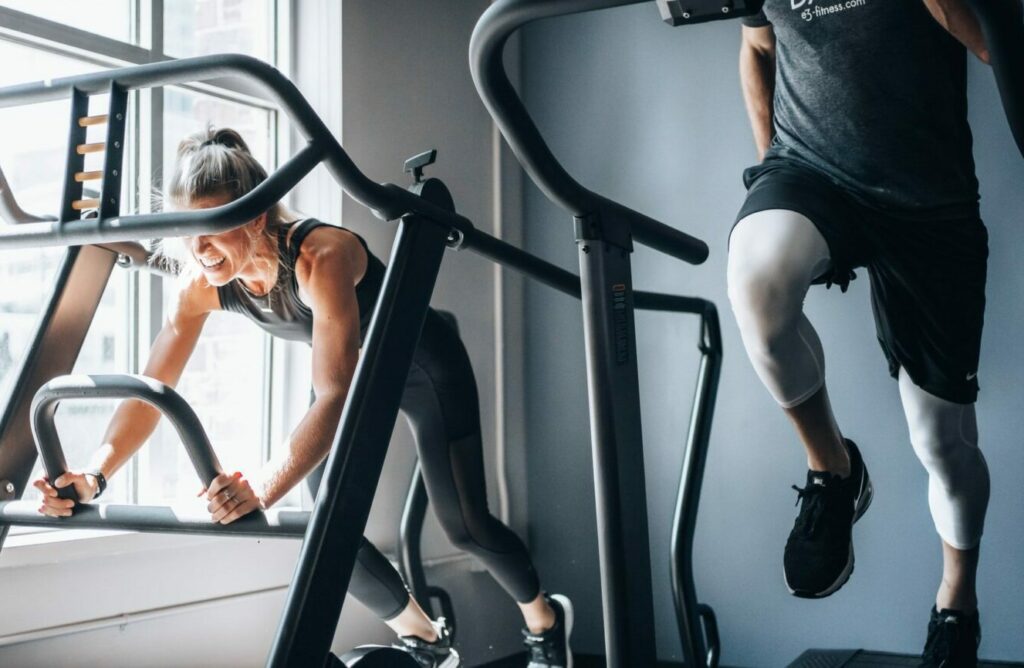
Cardio Training
When it comes to cardio, we can separate training into zone 2 and zone 5.
Think of zone 2 as your light tempo, longer-sustained cardio. It’s an aerobic activity that falls at around 60-75% HRmax. This is your slow-paced running > 5 miles or intense hiking. It builds the fundamental base for endurance → which is blood capable of transferring and cells capable of using more oxygen.
Then there’s zone 5 which is the hard-ass, high-interval-intensity training at 95%+ VO2max. This improves aerobic power, increases VO2max values, and enhances heart capacity. What’s most significant, is its effect on metabolic health. Short sprints seem to be great for insulin sensitivity and cholesterol profile.
Then there’s NEAT, the non-exercise-induced thermogenesis. While it’s not a part of the hybrid athlete training program, it’s important to mention it in the realm of health. NEAT is your daily walking, cleaning, taking the stairs, and getting to work type of activity. For optimal health, we need to move. A good standard would be 10K steps daily. This is especially true for those who move zero and want to get all the benefits with two 1-hour sessions. No, move more.
Now that we understand cardiovascular training, how do we train?
- NEAT → 10.000 steps daily is the base
- Zone 2 → 1-2 light aerobic training sessions (swimming, running, hiking) that last 45-75 minutes. This forms the aerobic base.
- Zone 5 → 1 hard high-intensity, short-interval, or HIIT session (sprints, cycling, rowing) weekly. Done at 90%+ HRmax with a ratio or rest to work of 3:1 or 1:1. This forms the anaerobic base.
Combining zone 2 (aerobic) and zone 5 (anaerobic) training builds a solid heart, optimizes mitochondria function, and improves lung capacity. It’s the key to longevity, from an aspect of cardiovascular exercise.
How Much Training is Enough?
The general WHO guidelines for physical activity recommendations for adults are 150-300 minutes of moderate intensity or 75-150 minutes of vigorous intensity.
Let’s say we lift weights twice weekly, for about 45 minutes, and hit one HIIT session → that’s about 100 minutes of moderate-vigorous activity.
While it depends on the individual, the ideal way to train for health and performance optimization would be
- 2 to 3 strength training sessions (lifting weights)
- 2 lighter cardio sessions (hiking, cycling, fast walking, slow running)
- 1 high-intensity, short-interval HIIT training (sprints, cycling, rowing)
With 2-3 strength training sessions, if we structure correctly, we can take care of the most important movement patterns, and strengthen most muscles. The training should prioritize compound movements like squats, deadlifts, pulling (row, lat pull-down), and pushing (bench press, OVR press) motions.
Considering we move enough, so 10.000 steps daily we can focus on cardio further. 2 lighter sessions take care of the base aerobic system, mitochondria function, and heart health. 1 short, but intense training improves VO2max, aerobic power, and metabolic health.
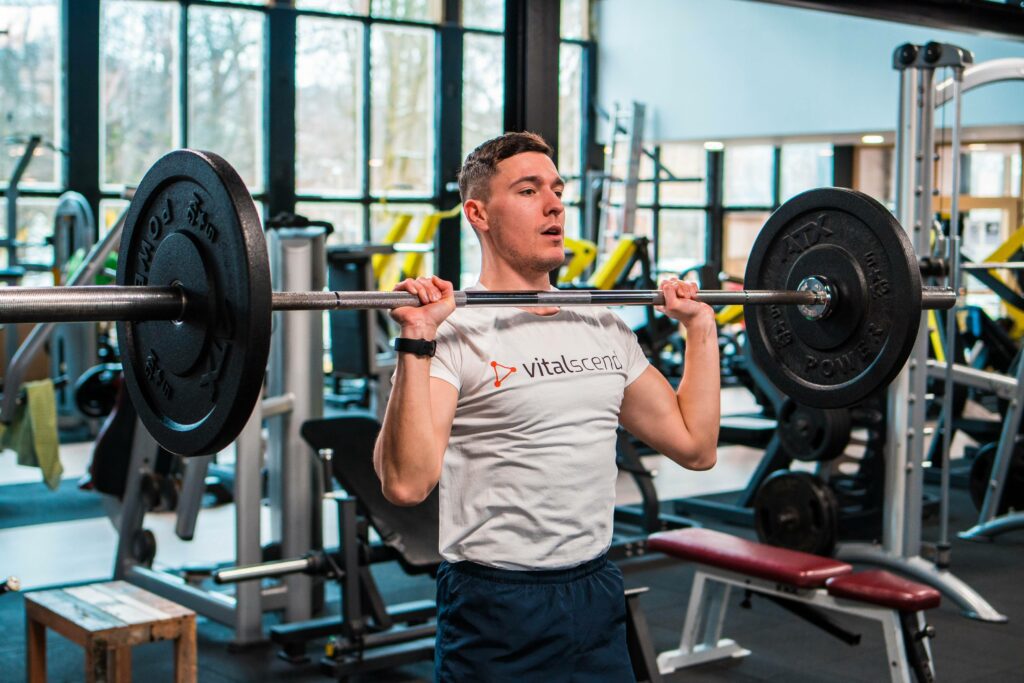
The ratio of Strength to Cardio Training
Training has to have some goals upon which the training structure is created. For example, we should know whether we’re prioritizing strength or endurance, and what subtype we train for.
This will determine the ratio of cardio to strength training we do. Every hybrid athlete must decide what to optimize for. If we want to become stronger, strength training should dominate. In such a scenario, we won’t become the best long-distance runner, and that’s okay.
A 50/50 ratio is great for general physical preparation. It’s what many amateurs would profit a lot from. however, as we gain more strength and endurance, and we become experienced with training, we should ask some questions.
What’s our weak spot we should train for, to get the best return on investment?
An extreme example would be someone muscular who doesn’t move at all, has a 10-hour desk job, and lifts weights 5 times weekly, but can’t climb the stairs because they’re out of breath. Yes, logically, they should do more aerobic training.
What is the ability we want to prioritize in a certain period?
We can’t optimally train for two abilities at once. In other words, if we want to grow in muscle mass, we should increase weight training volume. Can we run? Sure. But do we need to increase calorie intake? You bet we do. Unless a caloric surplus is present, we can’t grow muscle. These are some factors to take into consideration when trying to focus on one particular aspect of performance.
What do we enjoy more, what’s sustainable for us?
If one lives near the beach and enjoys swimming but can’t stand running, they don’t need to do it. The point is getting those aerobic points in. It’s about your lungs and heart working hard that benefits you. If swimming is more sustainable, do more of it.
Dedicated vs. Combined Training Plan
Training hybrid can be done with
- Dedicated Training → separate training focused on either strength or endurance. An example would be taking Mondays and Fridays to lift weights, while Sundays and Thursdays are reserved for cardio-work only.
- Combined Training → We combine strength and cardio in a single workout, all at once. This can be done by
2a) Functional training → incorporate multi-functional exercises that train both your muscles and aerobic system. Great examples would be landmine-press, squat jumps, medicine ball throws, pushing a sled, etc. These are suboptimal for maximal strength gains but are great for general preparation and functionality.
2b) Strength Training + Cardio Finisher → It is a combination that allows dedicated focus on a single ability for a given period, then transition. A typical example would be taking 45 minutes to lift weights, while finishing it up with an intense 15-minute cardio session, as a finisher.
Fitness Amateur vs. Hybrid Athlete Training Plan
Now let’s create a hybrid training plan. We’ll look at a weekly example of how an amateur can approach this vs. how a hybrid athlete would train.
Fitness Amateur → 3 Workouts
- Monday → Functional Training. 5 Exercises like squat jumps, kettle swings, landmine press, bear walks, and dumbbell press. 4 Sets, 10-15 reps, <1 min rest between sets.
- Wednesday → Hiking or Slow-paced running [Zone 2] in nature for about 90 minutes at 60-75% HRmax
- Friday → Functional Training. 5 Exercises like deadlifts, single-leg deadlifts, Russian twists, Medicine ball throws, and hip bridges. 4 Sets, 10-15 reps, <1 min rest between sets.
Hybrid Athlete → 5 Workouts
- Monday → Anterior chain strength training for hypertrophy. 4 Exercises: Squat, Bench Press, Overhead Press, Knee Extension. 4 Sets, 10-15 Reps, Load at 75% RM, 2 Min Breaks.
- Tuesday → 10 minutes HIIT session in Zone 5. 4 cycles of 20 sec. all-out maximal effort sprints on a cycle ergometer, with a 2-minute recovery at low-intensity
- Wednesday → Posterior chain strength training for hypertrophy. 4 Exercises: Romanian Deadlift, Single-Leg Deadlift, Lat-Pull Down, 1-arm Horizontal Rowing. 4 Sets, 10-15 Reps, Load at 75% RM, 2 Min Breaks.
- Thursday → 120 Min LISS Workout in Zone 2. Cycling at 60-80% HRmax, continual for 2 hours.
- Friday → Functional Training. Hip Mobility Warm-up. 5 Exercises: Farmers Carry, Kettlebell Swings, Dumbell Press, Planks and Lunge Jumps. 3 Sets, 8-18 reps (close to failure), Subjective load of 60% RM.
- Saturday → 120 Min Hiking at a moderate pace [60-80% HRmax] uphill in Zone 2.
Hybrid Training Myth
One of the biggest myths of Hybrid training is “you can’t lift weights and run at the same time”. This refers to how training for muscle eats away your endurance gains and the other way around.
Here’s the truth. You can be bulky and muscular and still run a marathon. You’d run it faster if you weren’t so bulky. This is because you’d spend a lot more energy carrying so much weight. It’s why an efficient long-distance runner is slim.
If the goal is optimizing for one single ability like lifting the greatest load or running a marathon the fastest you can, of course, focusing on one ability will make the most sense. However, two points here
- Hybrid athletes take pride in being well-rounded athletes who can do the best of both worlds. It’s a similar thing we see in CrossFit athletes.
- Most people benefit from improving both strength and cardio way more, than just focusing on one ability → in terms of getting the highest ROI on health and performance.
For normal people, strength and endurance won’t eat each other’s gains, they’ll complement them. Someone who squats and has strong quads will run better and prevent knee injuries. They’ll also be less aerobically limited, being able to deadlift for longer, because they’ve been hiking.
Strength will only hinder endurance [and the other way around] at an exceptional level of conditioning, which most people never get to. So, if health and performance are your priorities, you don’t need to worry. Yes, you can run, swim, hike, and lift weights at the same time.
Conclusion
Hybrid training combines strength and cardio exercise, getting the best of both worlds. For most, training hybrid is a great starting point to improve health and performance.
Predictors of longevity such as VO2 max, grip strength, body composition, heart rate variability, and balance are positively influenced by hybrid training.
Strength training benefits the muscular system, improving body composition, and increasing strength and bone density. Aerobic training improves cardiovascular function, and mitochondria function, increases VO2max and enhances metabolic health.
Training for strength doesn’t counteract gains in endurance (and the other way around) for most people. This only becomes relevant at an exceptional level of conditioning for athletes who need to excel at one specific ability. In fact, hybrid training is one of the best well-rounded approaches for most people.

